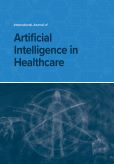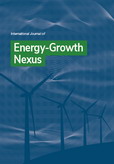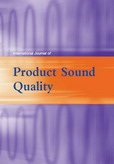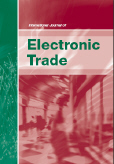Explore our journals
Browse journals by subject
Research picks
- Bricolage and optimism
Entrepreneurship is commonly seen as underpinning innovation and economic growth. However, it also carries significant psychological burdens, from stress and isolation to a pervasive fear of failure. Research has tended to focus on the financial and operational aspects of entrepreneurship, so the mental health of entrepreneurs remains underexplored. Work published in the World Review of Entrepreneurship, Management and Sustainable Development has now looked at how two factors, entrepreneurial bricolage and dispositional optimism, can shape psychological wellbeing among entrepreneurs.
Entrepreneurial bricolage is the practice of creatively pulling together available resources to overcome challenges and capitalize on opportunities. This resourcefulness helps entrepreneurs build resilience, reduce stress, and regain a sense of control in volatile business environments. Dispositional optimism, on the other hand, is the tendency to expect positive outcomes, a trait that has been linked to improved emotional regulation, greater life satisfaction, and enhanced job satisfaction.
The team examined a range of independent studies and have drawn out from them a model that integrates these two factors, showing how they interact to affect mental health. The findings reveal that both bricolage and optimism play complementary roles in promoting psychological resilience. Entrepreneurs who engage in bricolage experience higher job satisfaction and more positive emotions and those with higher dispositional optimism report greater life satisfaction in addition to positive job outcomes.
This model emphasizes that entrepreneurial success should not only be measured in economic terms but also by psychological wellbeing. As the study points out, fostering a better understanding of how entrepreneurs manage their emotional challenges could improve their long-term sustainability and mental health.
Although the current research is not wide-ranging, the review has enough evidence to offer a new framework for future research, particularly in examining the long-term effects of these factors across different cultural and economic contexts. This work calls for a broader view of entrepreneurial success, one that acknowledges the importance of mental health and emotional resilience as essential components of a thriving entrepreneurial ecosystem.
Al Saeed, F., Alaskar, A. and Ebie, S. (2025) 'The truth about bricolage, dispositional optimism, and psychological wellbeing in entrepreneurship: evidence from a systematic review', World Review of Entrepreneurship, Management and Sustainable Development, Vol. 21, No. 5, pp.20–44.
DOI: 10.1504/WREMSD.2025.150397 - Feel the city breakin' and everybody shakin', but you're stayin' afloat
Financial literacy is an important factor in determining how well micro, small and medium enterprises (MSMEs) can withstand economic shocks, according to a review in the International Journal of Business Innovation and Research that has surveyed a decade's worth of research in this area. The review essentially shows that stronger financial skills among business owners significantly improves the capacity of their company to adapt and survive during periods of disruption.
MSMEs account for the vast majority of businesses globally and employ a large proportion of the workforce. They can be vulnerable in times of crisis, such as a global economic downturn, a pandemic, or during periods of major international conflict. The review shows that this vulnerability is not an inherent characteristic of MSMEs but depends to a large degree on the acumen of the owner.
Across the literature, the team identified various recurring themes. Entrepreneurs with good financial knowledge were able to manage cashflow more systematically. Those same business owners make more informed investment choices and approach credit markets with a clearer understanding of risks, repayment structures, and borrowing costs. In addition, prudent debt management, effective liquidity planning and strategic decision-making were important in building company resilience.
The researchers also point out that there is a growing convergence of financial literacy with digital literacy. As digital financial tools, so-called fintech, become embedded in business practice, the two forms of knowledge increasingly reinforce each other. Fintech is no longer a peripheral tool in MSME operations, but is central to how such small businesses function.
The review, however, also identified persistent gaps in the way research in this area is carried out. There are inconsistent definitions of resilience, fragmented international evidence, and limited inclusion of demographic variables such as gender, age and socio-economic status. These shortcomings, the researchers argue, might limit efforts to build evidence-based training programmes and financial policies that reflect the diverse conditions in which the world's myriad MSMEs operate.
Esomar, M.J.F., Sumiati, S. Wijayanti, R. and Aisjah, S. (2025) 'Digital financial literacy and resilience in MSMEs: a bibliometric systematic literature review', Int. J. Business Innovation and Research, Vol. 38, No. 8, pp.1–30.
DOI: 10.1504/IJBIR.2025.150149 - Businesses innovating under pressure
Start-up companies facing economic uncertainty and tightening resources are changing our conception of innovation, according to a review in the International Journal of Business Innovation and Research. The review examined 347 papers published from 2000 to 2025 and found that scarcity is increasingly being treated not merely as a barrier but as a catalyst for new products, business models, and social outcomes. This finding is particularly true of emerging markets, where institutional support is often weakest.
The researchers examined four related models of resource-constrained innovation: frugal, inclusive, reverse, and constraint-driven entrepreneurship. Frugal innovation is typically defined as designing affordable solutions by doing more with less. It has broadened into a strategic approach that emphasises accessibility and relevance to local contexts rather than simple cost-cutting. Inclusive innovation extends this logic by involving marginalised communities directly in the creation of products and services intended for their benefit, shifting innovation from a top-down exercise to one based on participation and empowerment.
Reverse innovation, once viewed as an exception, has become a distinct approach wherein ideas originating in lower-income countries diffuse into wealthier markets. This challenges long-standing assumptions that technological and managerial know-how flows only one way from the developed world to the developing nations.
The study then argues that resource-constrained entrepreneurship links all three models, showing how start-ups rely on improvisation, bricolage (the creative repurposing of available resources) as well as social networks to develop solutions without formal backing or substantial capital.
The team found that scholarship in the early 2000s concentrated on conceptual discussions of institutional voids, gaps in infrastructure, regulation or markets that force firms to innovate differently, and on grassroots ingenuity. More recent research reflects technological shifts on the global scale, with growing emphasis on sustainability, digital transformation, and impact-oriented business models.
The review concludes that understanding how innovation emerges under constraint is becoming strategically vital for investors, governments, and businesses as economic, environmental, and social pressures intensify worldwide.
Yadav, M., Kumar, M., Goswami, A., Tiwari, N.K., Amoozegar, A. and Rani, P. (2025) 'Innovating under constraints: a bibliometric and systematic review of frugal and inclusive innovations in start-up ecosystems', Int. J. Business Innovation and Research, Vol. 38, No. 8, pp.31–55.
DOI: 10.1504/IJBIR.2025.150148 - Sustaining South African smallholders
Government grants aimed at boosting smallholder farming in South Africa are not delivering lasting improvements in business viability, according to research in the International Journal of Sustainable Agricultural Management and Informatics. The study suggests that while financial support has helped reduce immediate production pressures, many smallholders remain unable to implement sustainable practices. This highlights deeper structural weaknesses in the way public assistance is designed and delivered, according to the work.
Many regions across South Africa rely on small-scale farming to support the rural economy. But, many in a region such as Waterberg District in Limpopo Province experience high failure rates. Grants are available to ease financial constraints and encourage participation in local markets, but in practice, the study found that short-term gains rarely addressed long-term survival without ongoing subsidies.
In their survey of local agribusinesses, the researchers heard that farmers receiving support described noticeable reductions in production costs and improved yields, suggesting that these grants are not misdirected. But, the benefits simply didn't last. Many recipients became dependent on continued state assistance, a pattern the researchers link to persistent gaps in managerial capacity, limited technical skills, and weaknesses in the grant allocation process itself. Many businesses failed even when they had ongoing subsidies.
The researchers thus argue for more rigorous selection criteria to ensure grants reach farmers with viable development plans. In addition, there is a need for better oversight to ensure that allocated funds are used appropriately. The team also stresses that there is a need for integrated support beyond a simple injection of cash, such as targeted training in business management and improved agricultural extension services. There is a need for public programmes that offer farmers with technical advice as well as better coordination among local agencies involved in rural economic development.
Makunyane, M.K., Pretorius, M., Venter, M., de Bruyn, C. and Sztando, A. (2025) 'Government grants towards sustainability of agribusiness in local economic development', Int. J. Sustainable Agricultural Management and Informatics, Vol. 11, No. 5, pp.1–15.
DOI: 10.1504/IJSAMI.2025.150276 - AI got you babe, when it comes to making medical music
The ethical and artistic debates aside, there are good reasons for research into artificial-intelligence systems that can generate music. A new system described in the International Journal of Arts and Technology has improved on the quality and coherence of low-cost computer-generated music for use in music therapy and mental-health support.
The new approach combines two influential machine-learning approaches, long short-term memory networks, or LSTMs, and a multi-scale attention mechanism. This allows the system to overcome the shortcomings of previous algorithmic composition methods, side-stepping erratic structure, avoiding repetitive melodies, and extending emotional range.
LSTMs are a class of recurrent neural networks designed to preserve information over long sequences, making them well suited to modelling time-based data such as music. In the current work, the team used multi-layer LSTM structures with residual connections, a method that stabilises learning by allowing information to bypass certain network layers when needed. In addition, multi-scale attention allows the model to focus dynamically on musical features as they play out over different timespans.
Attention mechanisms, widely used in natural-language processing. Conventionally, they help AI systems weigh the importance of different inputs and when this is applied to making music, it allows the simultaneous consideration of local motifs, longer-term harmonic movement, and rhythmic development.
Tests of the new approach led to clearly coherent music, improved stylistic control, and more musical variety. Such qualities have proved difficult for generative models to balance until now. This means that an appropriate prompt for the generative AI could create music tailored to specific therapeutic needs.
While there are those who lament the emergence of AI music on streaming platforms and elsewhere to the detriment of songwriters and musicians, and perhaps rightly so, the researchers suggest that their system might have use in music-assisted therapy sessions for adolescents. Though preliminary, the results suggest that it is possible to tailor AI compositions to make music that helps improve sleep quality and reduce stress.
The team says that their model's ability to encode emotional nuance could make it useful for clinical and wellbeing contexts. This could be important where known recorded music may not fit the medical requirements precisely or may simply add music-licensing costs to cash-strapped healthcare facilities.
Li, L. (2025) 'Music intelligent creation method based on LSTM and multi-scale attention', Int. J. Arts and Technology, Vol. 15, No. 6, pp.1-25.
DOI: 10.1504/IJART.2025.150181 - We do need digital education
Research in the International Journal of Continuing Engineering Education and Life-Long Learning suggests that a rethink is needed on how English is taught in China. The work argues that mobile and networked technologies must move from the educational margins to the centre of language instruction. The researchers explain that classroom-based teaching alone can no longer meet rising academic and professional demands for English proficiency, and that well-designed digital platforms should now be seen as an essential part of motivating students and cultivating learning habits.
At the heart of the study is an autonomous learning platform built within a mobile intelligent information system. "Autonomous learning" refers to self-directed study in which learners set their own goals, monitor progress and reflect on their performance rather than relying solely on guidance from a tutor.
The platform distinguishes itself from others by drawing on self-regulated learning, which can be described as a cyclical process involving planning, performance, and reflection. Typically discussed theoretically in education, these elements are drawn together and underpin the features of the digital platform. Learners are guided through how to set realistic goals, engage actively with course materials, and carry out their own structured self-evaluations.
Concepts such as self-efficacy, a person's belief in their own abilities are embedded in interactive prompts and feedback loops intended to strengthen confidence and encourage persistence. While motivation, particularly the role of interest, emerges as a central theme. The study argues that cultivating curiosity and positive emotional engagement is not a superficial add-on but a psychological prerequisite for sustained attention and effective memory. By designing tasks that trigger curiosity and reward progress, the platform creates what the authors describe as an optimal mental state for language learning.
Liu, J. (2025) 'Multi-objective construction of English online autonomous learning based on mobile intelligent information system', Int. J. Continuing Engineering Education and Life-Long Learning, Vol. 35, No. 9, pp.35–51.
DOI: 10.1504/IJCEELL.2025.150091 - Long train running data
Railway infrastructure could be made safer and more reliable using AI, artificial intelligence, according to research in the International Journal of Information and Communication Technology. The research outlines a new automated, real-time fault detection system based on deep learning that can identify problems with track, bridges, tunnels, and signalling equipment. The work could address long-standing challenges in maintaining complex transportation networks.
Faults in railway infrastructure arise through wear and tear, ageing, and unexpected failures. Conventional inspection methods remain largely manual and periodic and as such are costly, time-consuming, and prone to human error. This limits their ability to detect problems early. The new AI system can process vast amounts of operational data and quickly identify patterns and anomalies with high precision that can then be followed up by maintenance staff.
One of the major obstacles to the development of automated tools for fault detection has been the scarcity and imbalance of the requisite data. Some types of failures are so rare that training machine-learning models is almost impossible, as there is a dearth of sample data on which to train the model. The new research tackles this by combining an enhanced Synthetic Minority Over-sampling Technique (ESMOTE) with a class-conditional Generative Adversarial Network (CSGAN). ESMOTE improves data diversity by clustering similar samples and interpolating between them, while CSGAN generates synthetic data that reflects the characteristics of different fault categories. This dual approach creates a more balanced dataset, reducing reliance on expert-labelled data and improving model stability.
Once the data is prepared, the system extracts detailed features from operational signals using a multiscale residual network (ResNet), a type of neural network that captures fine-grained patterns while taking into account variations in operating conditions. A subdomain-adaptive transfer learning strategy allows insights gained from one dataset to be applied to others, enabling accurate fault identification across different environments.
Tests on the new system gave a diagnostic accuracy of almost 94 percent, which is better than previous models that struggled with manual feature extraction or unbalanced datasets. The improved precision promises practical benefits for railway operators. Earlier fault detection means limited maintenance resources can be prioritized better and the number of disruptions to service minimized.
An, Q. (2025) 'Intelligent fault diagnosis system for railway infrastructure based on deep learning', Int. J. Information and Communication Technology, Vol. 26, No. 41, pp.107–122.
DOI: 10.1504/IJICT.2025.149991 - Don't stop SMEs now
Financial technology can significantly boost the environmental performance of small and medium-sized enterprises (SMEs) in Pakistan's manufacturing sector. However, this boost only arises when coupled with organisational innovation and access to green finance, according to new research in the International Journal of Business Innovation and Research. The work has looked at the pressures facing SMEs with limited resources in emerging economies in this context.
The research used data from 340 manufacturing SMEs in Pakistan and found, using structural equation modelling, that those companies adopting digital financial tools, fintech, showed clear improvements in sustainability performance. This is a broad measure covering cleaner production methods, reduced waste, and more efficient use of resources.
The structural equation modelling can tease out complex causal relationships, and so was able to determine how fintech interacts with internal innovation practices and environmentally focused financial instruments. The researchers thus found that technology alone was insufficient to boost SMEs, but its effects were strongest when it prompted firms to redesign processes, improve transparency, and make operational decisions based on real-time data.
The team adds that access to green finance, such as loans linked to sustainability efforts or green bonds, was just as important. Such financial products, earmarked for environmental improvements, are usually out of reach of many SMEs because of limited collateral or weak reporting systems. Their use of fintech helps them overcome such barriers by standardising data, streamlining due-diligence checks, and widening the pool of potential lenders.
As a result, firms using digital financial tools were better able to secure funding for cleaner technologies that they could not otherwise afford. Organisational innovation and green finance affect the link between adopting fintech tools and sustainability outcomes. This means that technology improves environmental performance partly by enabling these other capabilities. Conversely, fintech itself mediates the relationship between green finance and sustainability, acting as the mechanism that converts earmarked funding into measurable environmental gains.
Rashid, S., Ejaz, S., Alwadi, B.M., Kumar, A., Ejaz, F. and Hossain, M.B. (2025) 'Linking financial technology, innovation, and green finance to drive sustainable performance of SMEs of Pakistan', Int. J. Business Innovation and Research, Vol. 38, No. 6, pp.30–54.
DOI: 10.1504/IJBIR.2025.149938 - Every breath you don't take
Artificial intelligence (AI) might be used to improve the early detection of chronic obstructive pulmonary disease (COPD), according to research in the International Journal of Innovative Computing and Applications. COPD is a serious and ultimately terminal condition of the lungs.
COPD is a long-term, progressive lung condition common in smokers and those exposed to noxious volatile substances, although it can affect non-smokers too. It is an umbrella term enshrouds chronic bronchitis and emphysema, both of which cause narrowing and damage to the airways and lead to a persistent cough, excess mucus, shortness of breath, and frequent respiratory infections. The disease gradually reduces the lungs' ability to move air in and out, and although incurable, early diagnosis allows for better management with medication, pulmonary rehabilitation and lifestyle changes.
The new approach to diagnosis uses machine-learning techniques to analyse digital recordings of lung sounds could help recognise a large number of COPD cases that remain undiagnosed worldwide.
The researchers trained algorithms to differentiate between the sounds of air being inhaled and exhaled by healthy individuals and by patients with confirmed COPD, and other conditions such as asthma, pneumonia, respiratory tract infection, and bronchiolitis. This multifarious training reflects what clinicians routinely face: patients with symptoms that overlap with other respiratory conditions and problems. The algorithmic approach would assist the auscultation approach commonly used by clinician, whereby they listen to the patient breathing using a stethoscope and interpret what they hear.
The algorithms thus-developed can identify the subtle acoustic cues linked to respiratory disease through their prior exposure to the large, diverse datasets. The system achieves 95 per cent accuracy, which make it a useful addition to the diagnostic approaches available, and could be used to triage at-risk patients where clinician numbers and specialist resources are limited. Given that COPD is a leading cause of death and disability, and often progresses unnoticed until lung function is severely impaired, the approach could improve outcomes and quality of life for many putative patients.
Amose, J., Manimegalai, P., Amritha, M. and George, S.T. (2025) 'Acoustic analysis of chronic obstructive pulmonary disorder using transfer learning: a three-class problem', Int. J. Innovative Computing and Applications, Vol. 15, No. 3, pp.135–144.
DOI: 10.1504/IJICA.2025.148627 - Yeah, right!
A new approach to sentiment analysis could reduce one of the field's most stubborn sources of error: the misinterpretation of sarcasm. The system is discussed in the International Journal of Intelligent Engineering Informatics. It shows that machine-learning models can be trained to recognise when language means the opposite of what it appears to say. This is an important advance in language processing with implications for businesses, policymakers, and analysts who rely on automated readings of public opinion.
Sentiment analysis aims to classify text as positive, negative or neutral, but often comes unstuck when analysing remarks that a human reader would immediately recognise as sarcasm. Sarcastic remarks often invert the literal meaning, and so conventional algorithms can misread the tone, distorting everything from political polling to consumer-behaviour forecasts. With online communication proliferating across social media and forums, the cost to society of such errors is on the increase.
The new framework system combines two distinct techniques to handle this problem. First, it uses BERT, Bidirectional Encoder Representations from Transformers. This is a language model that reads text in two ways and can identify subtle cues that signal irony, a contradiction or a tonal shift. These contextual embeddings are essentially numerical representations of meaning. They are passed to a so-called random forest algorithm for classification to improve reliability. Random forests are well suited to spotting complex, non-linear patterns in data, making them a natural complement to BERT's linguistic sensitivity.
The researchers trained their new system on a bespoke dataset rich in realistic, fine-grained examples of sarcastic speech. When they tested the trained model against established sentiment-analysis models, including lexicon-based, statistical, and deep learning systems, they were able to spot sarcasm with 85 per cent accuracy. The same system could also identify neutral sentiment, which is an area where existing tools often struggle because sarcasm can the true intent of what is being said.
The researchers emphasise how more accurate detection of sarcasm could yield more trustworthy analytics across sectors that depend on understanding public mood.
Davidson, G.P., Ravindran, D. and Pratheeba, R.A. (2025) 'CASD on enhancing sentiment analysis using context-aware sarcasm detection on social media', Int. J. Intelligent Engineering Informatics, Vol. 13, No. 3, pp.267–296.
DOI: 10.1504/IJIEI.2025.148583
News
Inderscience journals increasing issue frequency in 2026
Inderscience is pleased to announce that the following journals are increasing their issue frequency from 2026:
International Journal of Computational Vision and Robotics
Increasing from 6 to 8 issues per year
International Journal of Electronic Business
Increasing from 4 to 8 issues per year
International Journal of Electronic Marketing and Retailing
Increasing from 6 to 8 issues per year
International Journal of Medical Engineering and Informatics
Increasing from 6 to 8 issues per year
Prof. Sangbing Tsai appointed as new Editor in Chief of International Journal of Ultra Wideband Communications and Systems
Prof. Sangbing (Jason) Tsai from the International Engineering and Technology Institute in China has been appointed to take over editorship of the International Journal of Ultra Wideband Communications and Systems.
Prof. Yiping Wang appointed as new Editor in Chief of International Journal of Aerodynamics
Prof. Yiping Wang from Wuhan University of Technology in China has been appointed to take over editorship of the International Journal of Aerodynamics.
Prof. Shancang Li appointed as new Editor in Chief of International Journal of Information Privacy, Security and Integrity
Prof. Shancang Li from Cardiff University in the UK has been appointed to take over editorship of the International Journal of Information Privacy, Security and Integrity.
Prof. Chi-Yuan Chen appointed as new Editor in Chief of International Journal of Computational Intelligence Studies
Prof. Chi-Yuan Chen from National Ilan University and Fo Guang University in Taiwan ROC has been appointed to take over editorship of the International Journal of Computational Intelligence Studies.




